alt
SCLT Talk Features Tie Hacks from Southern Wyoming
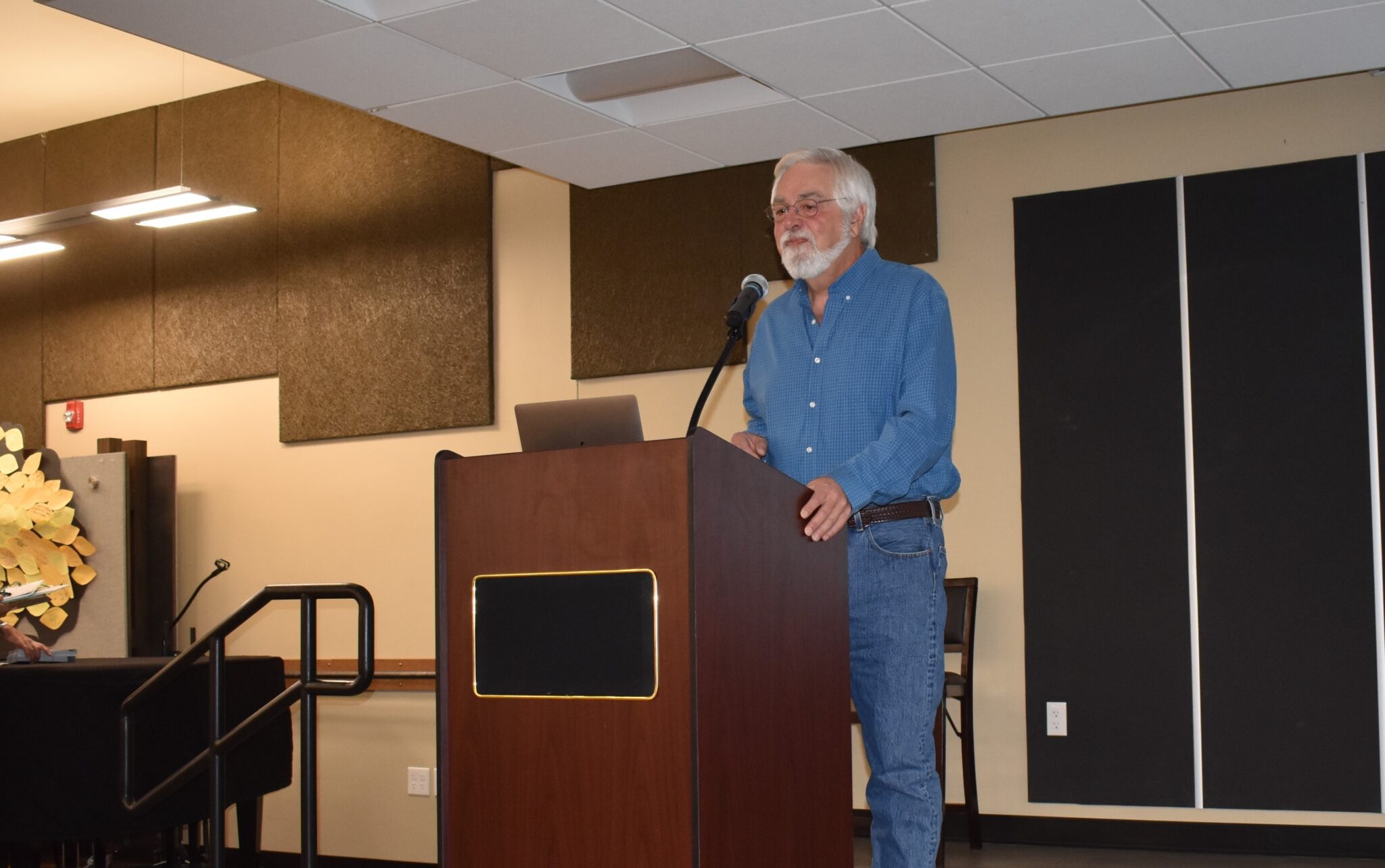
On Tuesday, Oct. 11, Sheridan Community Land Trust and the Hub on Smith presented a program by Dave McKee, current president of the Fort Phil Kearny/ Bozeman Trail Association on the tie hacks in Southern Wyoming, 1906 -1912.
McKee recently completed a 34-year career with the U.S. Forest Service as an archaeologist, tribal liaison, and recreation program manager, working on the Medicine Bow, Black Hills, and Bighorn National Forests. McKee has a master’s degree in archaeology with an emphasis on plains archaeology from University of Wyoming.
McKee’s presentation reviewed the life and times of the historic tie hacks in the Sierra Madre and Medicine Bow Mountains.
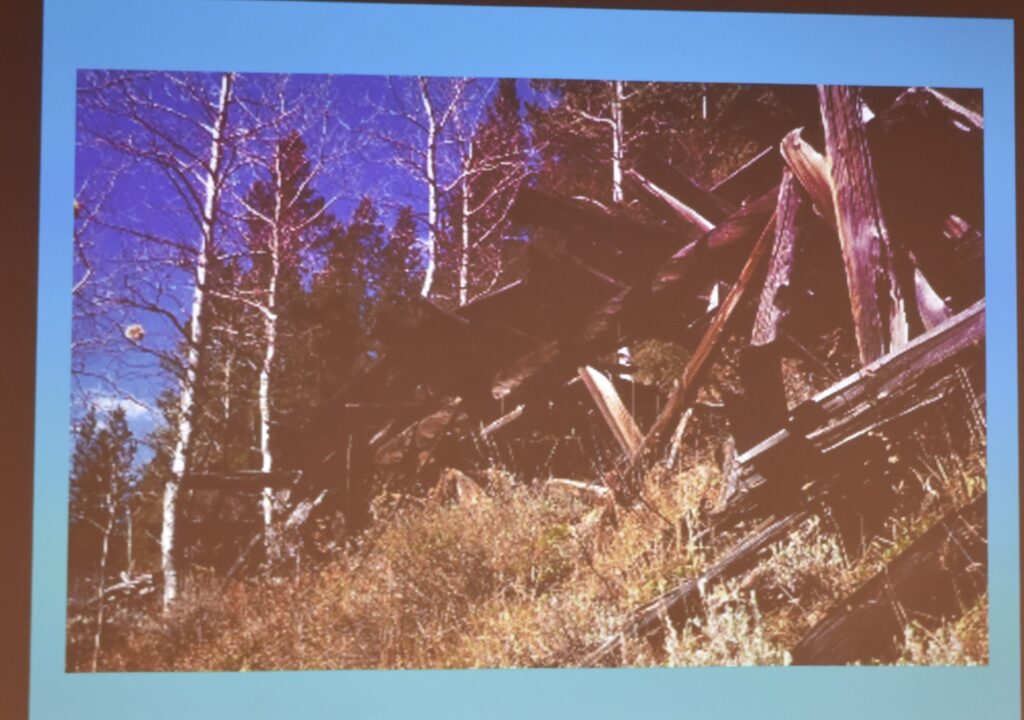
He talked about how, in the early 1900s, Carbon Timber Company established winter tie cutting camps in the two mountain ranges Mountains along the Wyoming/ Colorado border. The presentation covered the period between 1906 – 1912, but Mckee added that:
Mckee presented several historic slides, as well as his own photos of the ruins of the mining camps. He talked about some of the early operators in the area including one who is familiar with many local people.
Mckee said that the Carbon Timber Company operated until 1912 when Wyoming Timber Company took over the operation. Many of the slides he displayed were from the Carbon Timber Company, courtesy of Encampment Museum, US Forest Service, and American Heritage Center, University of Wyoming.
Some photos from the Grand Encampment Museum and the American Heritage Center were taken by a young lady from Encampment around 1900.
On a map, McKee pointed out the location of the tie hack activity. Carbon Timber company set up a tie flume on the North Platte River, and a timber town across the river from Fort Fred Steele, about 12 miles east of Rawlins.
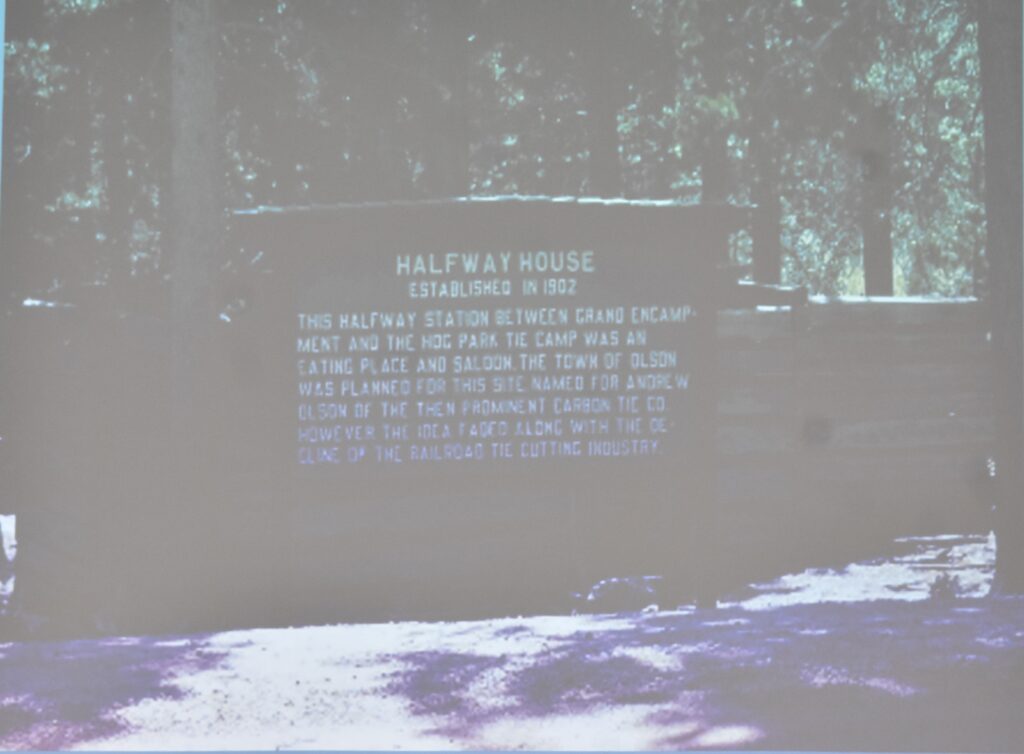
To get to the tie hack camp one had to travel south from Encampment, by stage or wagon for about a day to the halfway house, established by the Olson family. There were two buildings, and a barn. One could rest up get something to eat, then continue on to the tie hack camp the next day.
The tie-hack cutters were called, “Knights of the Broad Axe” as a broad axe was used to hand cut the ties. Early on, before 1900s there were Civil War vets and French-Canadian cutters who worked as the tie hacks, but after 1900 there were many northern Europeans, Swedes and Norwegians that came to Wyoming and worked at the camps.
How many ties could a good tie hack cut in a day? One report from the time was that a good tie hack could cut between 25 and 30. One story McKee told was about a young cook in about 1903 who said she would marry the man who could cut the most ties in one day.
During this time period tie hacks made between 7 cents and 25 cents per tie. A class one, best tie was 8 foot long, 7×7 inches wide, with 5 inches on two sides be a debarked level surface. Tools of the tie hack were the board ax, measuring stick and the spud peeler for removing bark. Using a buck saw, either one man or two men would cut down the tree, then the tie hack would make the log into a tie using the board axe, and the spud peeler. Lodge Pole pine were numerous on the mountains and were most desirable trees for the ties.
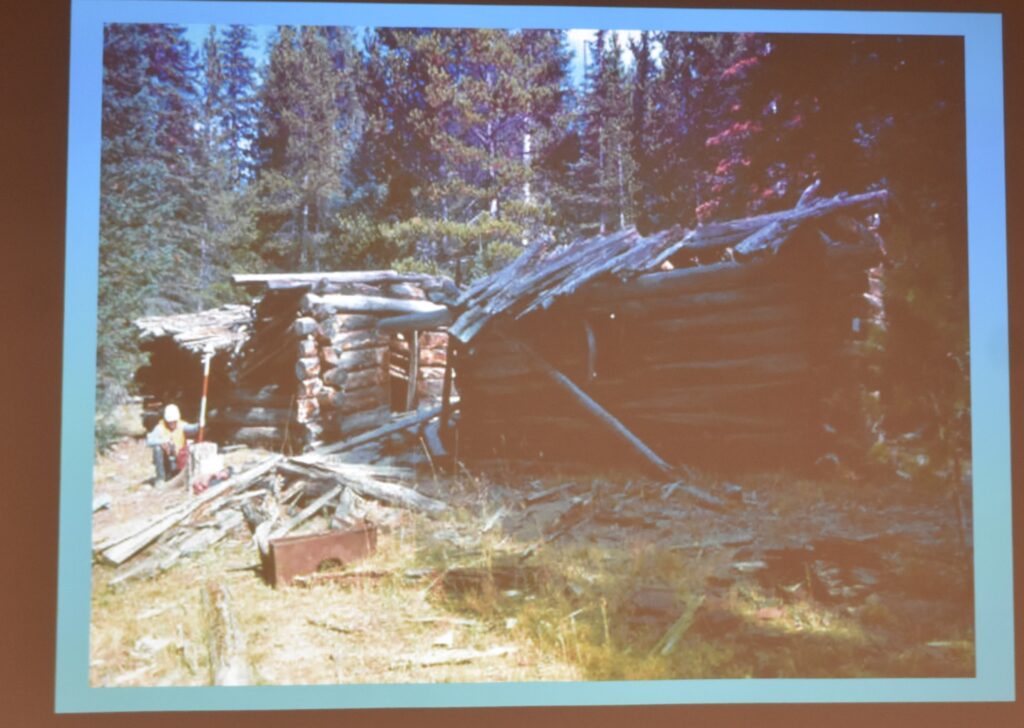
Cutting was done during the winter, tie hacks would build cabins around the cutting area, and live in them throughout the winter. Each tie hack had his own area and ties were moved to a central location to be stacked until snow melt. They had big sleds with draft horse teams, and they made trails through the timber area. Each day they would come though, pick up the ties and determine how many ties each man had cut. The draft horses wore Norwegian snowshoes to help them walk in the snow. The ties were then stacked until snow melt.
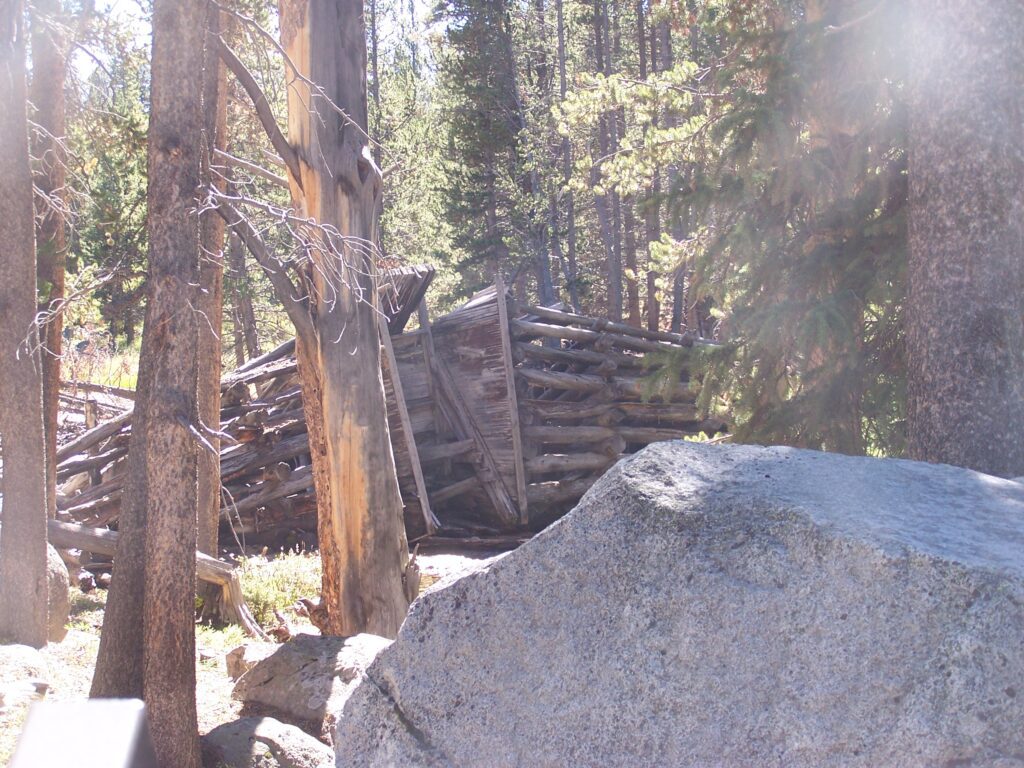
Come spring, the ties were floated down the North Platte from Encampment, through Saratoga, to Fort Fred Steele where they were pulled out of the water, left to dry a while, then loaded on train cars and taken to the end of the track, where they were used to continue the rails.
Much of the country was very rough and mountainous, and McKee showed several slides of the flumes in the area, The Warm Springs Flume near Dubois, and the Devils Gate Flume in the Sierra Madres.

They would build splash dams to hold back the stream until time to float the ties down the river. Sometimes they would build earth dams and, at snow melt they would dynamite the dams to let the water loose. There are some remnants of the flumes still there, and stacks of ties that were never floated down river.
The tie-drive down river was a big event. The tie hacks would get paid and come into town after a winter in the mountains. Carbon Timber Co. would set up camps with a meal and a place to rest overnight during the journey. The families and other community members would travel along the side of the river as the ties floated down, “It was quite the holiday.” McKee added.
The most dangerous part of the tie hack job was the tie-drive, with the men making sure the ties were carried down the river and didn’t create log jams. They used pike poles and sometimes dynamite to break up any jams. McKee said it is hard to imagine the ties going down the small creeks, but they did.
The ties were taken out of the river near Fort Fred Steele, and then loaded on rail cars by hand. The loaders made more money than the tie hacks, but that was hard labor. Many of the men had metal hooks sewn into their jackets to hold the logs as they moved them.
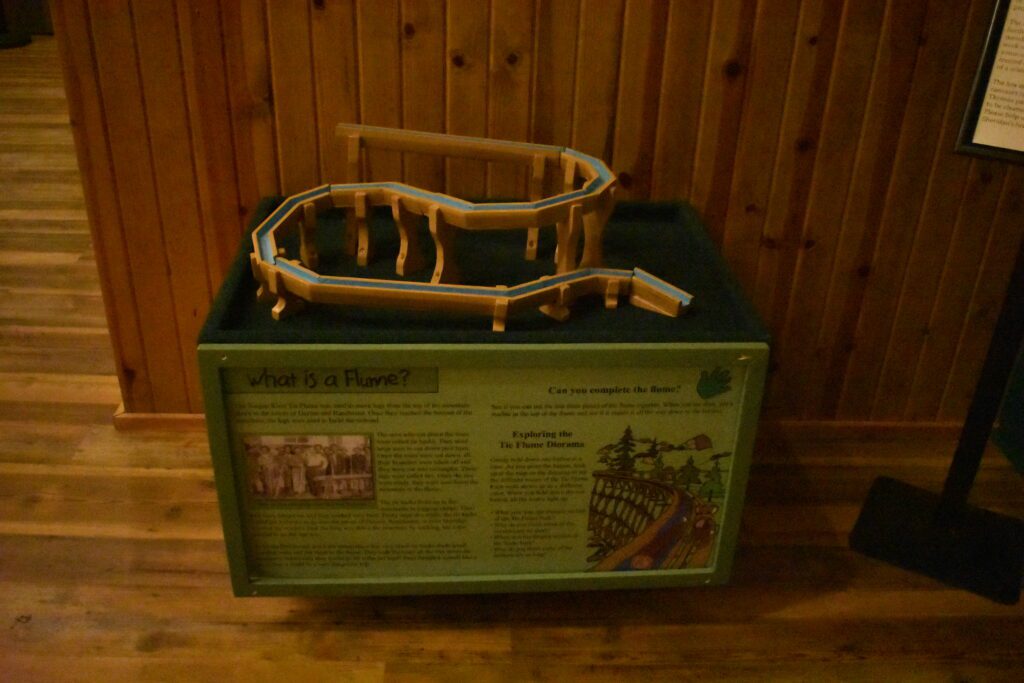
Then the ties were taken to where the railroad was being built. One estimate is that in 1902 Carbon Timber Co floated a half million ties down the river.
In 1902, there were about 300 people in camp, not counting the tie hacks in the surrounding cabins. McKee said his research also showed that not all the tie hacks were not all old crazy bachelor Swedes, there were women and families in the camps as well. Activities around the camp included skiing trips, weddings and dances. There was also usually a small school set up for the children.
He said that the tie hacks took out homestead claims under the Stone and Timber act of 1878, for land that was too poor for farming, but could be logged or mined. Because of this record, historians know the names of many of the tie hacks.
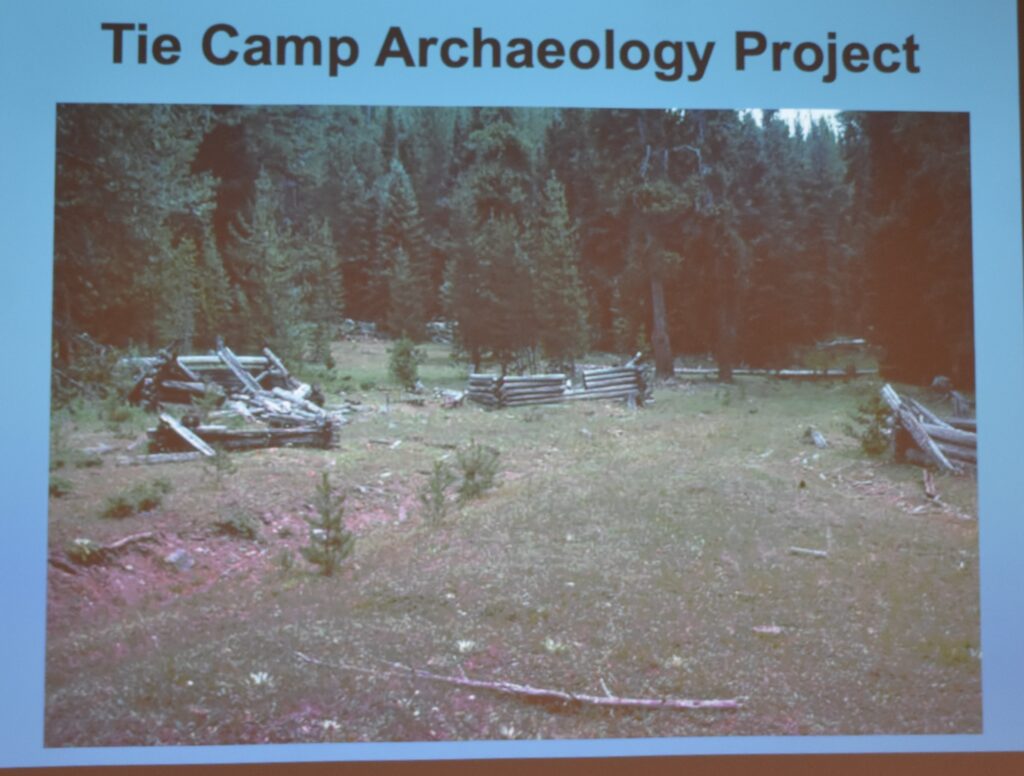
McKee ended his program by talking about some of the archaeology work he did at the site, mentioning that instead of finding evidence of wild game as the main diet, there were bones of pigs and turkeys, domestic animals that were brought into the camps.
The archaeology team found a barn, and a small building that was a blacksmith shop. They found evidence of patent medicines, which could be ordered out of the Sears Roebuck catalog, beer bottles, ceramics, such as white hotel wear, and snuff containers.
McKee said that after WWI, they began using portable sawmills, and in 1929, trucks were used to transport the ties. About the same time the cabins were built so they could be moved behind the trucks from camp to camp, the first mobile home. With mechanization, the day of the tie hack gave way to more modern methods of lumbering and making ties, and the tie hack passed into history.
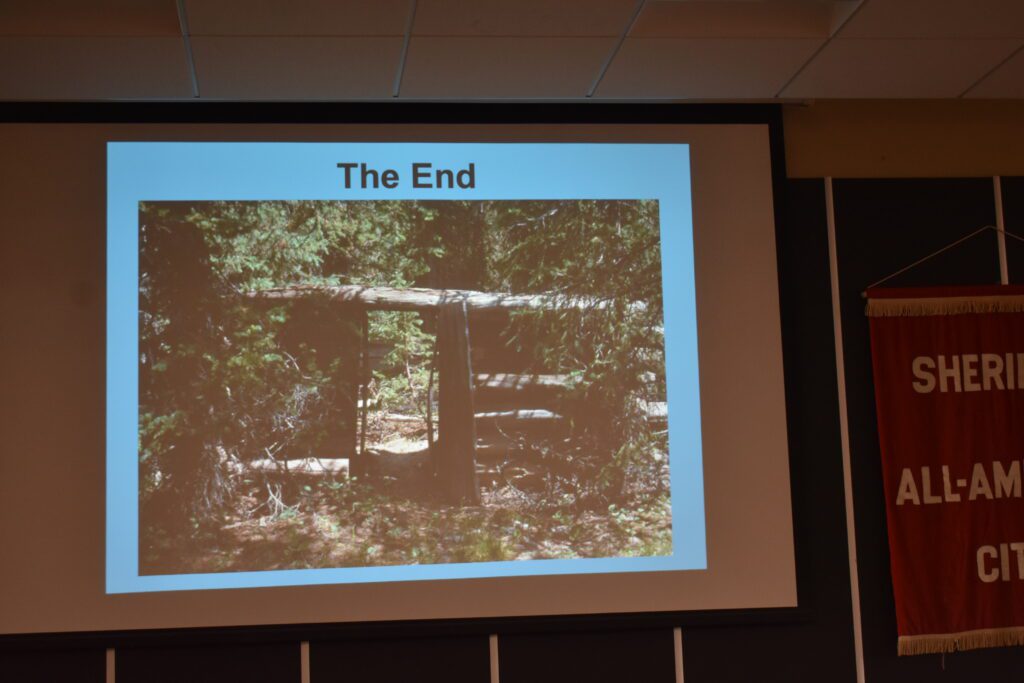
This Explore History program will be repeated on Oct. 18 at the Tongue River Valley Community Center at 10:30 a.m. The Explore History programs offer open conversation for community members to share their memories or historical information about these sites. The Explore History program is generously funded by the Next50 Initiative.

